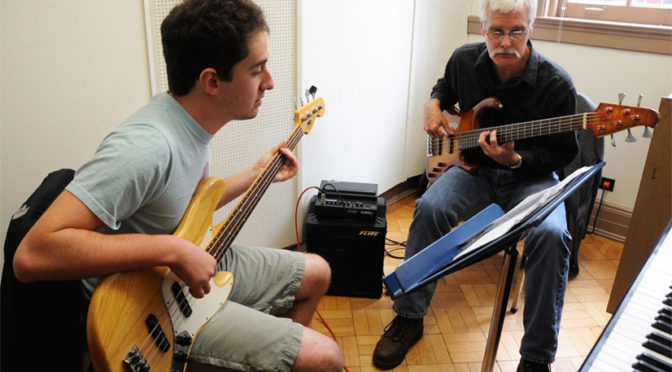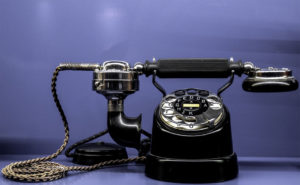by Nathan Kahn, Negotiator, AFM Symphonic Services Division
All orchestral audition candidates are looking for the same thing in the audition circuit: a fair chance to compete for a symphonic position, and to be treated as a professional in the process. On the other side of the process, audition committee members and orchestra management encounter their own set of challenges. An understanding of the issues each side faces will promote a more fair and enjoyable audition process for everyone.
Challenges for Candidates:
Expenses—Whereas job candidates in other professions are often reimbursed for their interview travel expenses, that is certainly not the case with symphonic auditions. I have yet to hear of any symphonic orchestra who pays the expenses of preliminary round candidates. However, many orchestras do pay the travel expenses for finalists called back to audition in final rounds.
Orchestras may even require audition candidates to send a deposit check. As long as the candidate shows up on audition day, the check will be returned or destroyed.
Audition scheduling—Suppose you open your copy of International Musician and find that there are five forthcoming and very desirable orchestra violin vacancy auditions, and all of them are scheduled for the exact same day. This happens more often than you might think. To minimize this problem, the AFM Symphonic Services Division maintains an audition scheduling website for AFM orchestra personnel managers. This service is free of charge and benefits both the candidates and the orchestras. If your AFM orchestra’s personnel manager has not yet availed themselves of this service, please have him/her contact me at nkahn@afm.org.
Just getting in the front door—Getting admitted to an audition can be almost as challenging as the audition itself. While there is no AFM bylaw that requires any orchestra to grant a live audition to union members, the AFM can sometimes assist candidates who are seeking acceptance to an audition by convincing personnel managers and audition committees to hear “just one more.” Appearing at an audition without having been invited, although some candidates still insist on doing this, will get you nowhere and is strongly discouraged.
Audition conditions and requirements— Audition candidates have the right to warm-up and audition in an environment that is sufficiently comfortable and that is free of any considerable distractions. Candidates should not be expected to put their instruments in any type of weather-related danger, or to spend excessive amounts of money on difficult-to-acquire music.
The Audition Committee View:
The process of filling a vacant seat varies widely among orchestras, but these are some factors that management takes into consideration:
Whether to hold an audition—The audition committee must first decide whether or not to hold an audition. In lieu of a live audition, some orchestras may decide to appoint a certain musician who, for example, may have performed successfully with the orchestra in the past. They can do this through a previously negotiated “appointment” procedure within the orchestra’s collective bargaining agreement, or by some other mutual agreement between the audition/orchestra committees in conjunction with their local union and the management.
I often get complaints from audition candidates demanding that the AFM should “force” the orchestra to have a competitive audition for a position. There is no requirement that any orchestra hold a live audition for any vacancy, unless otherwise specified in the orchestra’s collective bargaining agreement. Even then, the audition/orchestra committees in conjunction with their local union and the management could agree to waive that requirement.
In some instances, a group or an individual will try to force the local orchestra to hold a competitive live audition when the prevailing sentiment was to appoint a certain person. This only results in the orchestra going through a farce of an audition where no one is hired and the original appointment proceeds regardless, wasting the time, energy, talent, and money of audition candidates.
How to screen the candidates—If the audition committee does decide to hold an audition, they must also decide how large a field of candidates to seek. Some orchestras want to hear every candidate who applies, while others may specify in their advertisement that they will only hear “a limited group of highly qualified candidates.” In such circumstances, it is much less likely that the AFM can assist in getting someone admitted to the audition if the audition committee has refused to grant them a live audition.
Some orchestra vacancy advertisements include the following language: “The Audition Committee reserves the right to immediately dismiss from the audition any candidates who do not exhibit the highest professional performance level at these auditions.” These orchestras want to hear as many candidates as possible, but their time is limited. A candidate will often complain that he/she was cut off one minute or less into the audition. I refer the candidate back to that statement in the advertisement; it means what it says.
Scheduling auditions times for candidates—One method for audition scheduling is to assign a window of time to an entire group of candidates, and then have the candidates draw lots to determine the order in which they audition. While this tends to alleviate the problem of time flexibility for the audition committee, it has the opposite effect on the candidates. Some candidates may have to perform their audition with little or no warm-up time, while others may be forced to wait around for hours.
The other method is to assign specific audition times for each candidate. There are, at least, two problems with this approach. First, audition committees complain that such a tight schedule prevents them from hearing as much as they would like in order to be able to make an informed decision. Second, is the problem of no-shows: musicians who have been assigned an audition time, and for whatever reason, fail to appear. When multiple no-shows occur, personnel managers must either round up other candidates to fill in the empty time slots or require the audition committee to wait for extended periods of time for the next group of candidates to appear.
Recurring auditions for the same position— Sometimes an audition is inconclusive. Perhaps the voting procedure in the audition process failed to produce enough votes to select a winning candidate, or perhaps no candidate was deemed qualified for the orchestra. In these cases, the orchestra reserves the right to continue to hold auditions until a successful candidate is engaged.
Use or non-use of screens—In the 1970s, the Saint Louis Symphony and the Boston Symphony started using screens to protect the identity of the candidates, and many other orchestras followed suit. Now, it seems that more orchestras are reversing course and removing screens in the audition process, since some audition committees and music directors have expressed that they feel the need to see, as well as hear, the candidates. Neither the AFM, nor the Code of Ethical Audition Practices, takes any position on the use of screens. That determination is made on the local level; often through the collective bargaining process.
Fixed auditions—Proving that an audition outcome was predetermined is extremely difficult, and investigations are often inconclusive or show that the orchestra’s collective bargaining agreement, in fact, allows for what may appear to be a “fixed” result. For example, some collective bargaining agreements automatically advance musicians who have successfully subbed with the orchestra, who have reached a certain level of professional experience on their résumés, or who may have been in the finals of a previous audition in this or some other orchestra.
When it can be demonstrated that a predetermined audition did occur, the local union, combined with the AFM, works to get candidates reimbursed for at least their travel expenses.
Playing Fair
As competition for some orchestral positions increases, so should vigilance on the part of local unions and their audition committees to uphold the highest standards of ethics and integrity in the conduct of auditions. At the same time, candidates should be aware of the difficulties in taking auditions and should understand that not every orchestra is willing and able to grant a live audition to all who may apply, even with the AFM’s assistance to candidates who may request it.
Musicians who have symphony audition complaints should contact the AFM Symphony Audition Complaint Hotline at 330-322-2265. All complaints are handled anonymously unless the nature of the complaint requires identity.









 We all know what’s wrong with eating too much restaurant food on the run. Too much fat, sugar, and salt combined with hurried eating can lead to weight gain, fatigue, sluggishness, and even worsening pre-existing health conditions. Often there’s also a lack of fiber in a road diet, and usually fresh greens are in short supply.
We all know what’s wrong with eating too much restaurant food on the run. Too much fat, sugar, and salt combined with hurried eating can lead to weight gain, fatigue, sluggishness, and even worsening pre-existing health conditions. Often there’s also a lack of fiber in a road diet, and usually fresh greens are in short supply.






